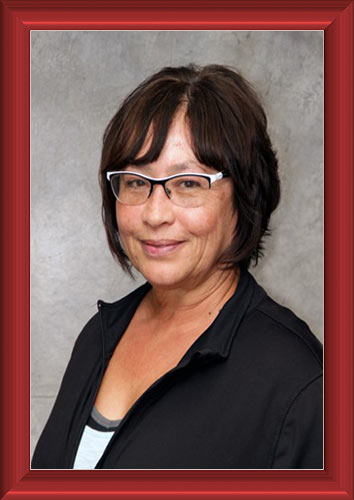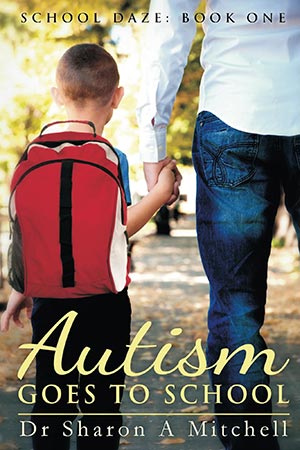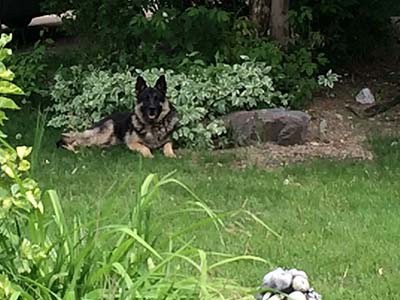Joining me today is Dr. Sharon A. Mitchell, who seeks to entertain, as well as inform, with her stories on autism. A little research on my part and I found that a study by the Centers for Disease Control and Prevention (CDC, in the USA) identified 1 in 68 children as having autism spectrum disorder (ASD). Someone in your family may be autistic, or a family member of a friend. If not, chances are you’ll meet someone with autism at some point in your life. I’m sure we’ll learn even more during the interview. Thank you, Dr. Mitchell, for taking the time to chat to me. Please sit down, get comfortable and let’s begin.
About Dr. Sharon A. Mitchell
Dr. Sharon A. Mitchell has worked as teacher, counselor, psychologist and consultant for several decades. Her Masters and PhD. degrees focused on autism spectrum disorders and helping kids to reach as high a level of independence as possible.
The first book in the series, “Autism Goes to School” is an award-winning Amazon bestseller. Yes, life with autism has its struggles, but there are strengths as well and the fun parts that any family experiences. The book is full of the challenges inherent in autism plus strategies that make life easier for all concerned. It’s a story about a single dad doing the best he can. One in sixty-eight American children has an autism spectrum disorder and one in every forty-two boys. Every teacher will have a child with autism in their classroom. Every coach will meet a child with autism. If autism has not touched your family, it will affect your friends or neighbors.
Autism Goes to School has been followed by these books; Autism Runs Away, Autism Belongs, Autism Talks and Talks, Autism Grows Up, and, coming in 2017 is The Autism Goes to School Workbook and the Prequel to Autism Goes to School. Join the kids and staff of Madson School as they learn and grow and welcome others with special needs into their midst.
When not writing, Sharon works as an autism consultant, teaches university classes and works on their grain farm in western Canada.


What’s the name of your new book?
Autism Goes to School – Book One of the School Daze Series
Tell us a bit about your book
After suddenly receiving custody of his five year old son, Ben must learn how to be a dad. The fact that he’d even fathered a child was news to him. Not only does this mean restructuring his sixty-hour workweek and becoming responsible for another human being, but also Kyle has autism.
Enter the school system and a shaky beginning. Under the guidance of a gifted teacher, Ben and Kyle take tentative steps to becoming father and son.
Teacher Melanie Nicols sees Ben as a deadbeat dad, but grudgingly comes to admire how he hangs in, determined to learn for his son’s sake. Her admiration grows to more as father and son come to rely on Melanie being a part of their lives.
Give us an insight into your main character. What makes them unique?
Each of my books features a child or young adult who has a form of autism. Although an autism spectrum disorder is the commonality, the type of degree of autism symptoms varies and how these features interact with the character’s personality make him unique. There’s a saying – “If you’ve met one child with autism, you’ve met one child with autism.”
Where do your ideas come from?
Ideas spring from my imagination. I love the question, “What if…?” The delightful thing about writing fiction is that you can let you mind soar; that’s how a book begins but then the characters take over and drive what happens next.
What do you consider to be your best accomplishment?
This is a tough question. I think it would be raising two sons to be independent, responsible, nice young men who are not afraid to tackle challenges. Although one has an autism spectrum disorder, between them they have five university degrees. We’re proud of our kids.
I’m also proud to say that I love my job(s). I work as an autism consultant for a health region, teach university classes, write and farm.
Where do you see yourself in 10 years?
Hmm. Writing, of course and farming. Likely, I will cut back on the consulting work but still teach at university part-time.
Have you always liked to write?
As a school district consultant, I offered to assist a group of high school teachers who were introducing NaNoWriMo to their students. That sounded like fun, but as I listened to the kids setting their goals and taking their huge step, how could I not put myself out there as well? Drats. This was more than I’d signed on for.
I’d heard about NaNo for years, but it all seemed too daunting. Write a novel in a month? Who are you kidding? With full-time jobs, a family, elder-care, plus teaching university classes, and doing volunteer work, who has time to write?
I came across a little ebook that changed my mind. Lazette Gifford has written a wonderful little book that makes NaNo seem within reach for even those who are scared to try. NaNo for the New and Insane (http://lazette.net/free%20stuff/nano.htm)
Unwillingly, and scared stiff, I entered NaNo and then had the time of my life. Although I’d written several dozen pieces for magazines, published hundreds of pieces at AllExperts.com and done academic writing, this was my first attempt at fiction. NaNo was freeing. To write that many words in four short weeks, I had to turn off my inner editor and just let go. It worked! The words just flew out of my fingers, easily surpassing the 50,000 word goal. But, then NaNo was over and the editing process began.
So, Autism Goes to School was born – a light read aimed at a general audience. It was fun for me to write and I hope fun for you to read. Yes, life with autism has it’s struggles, but there are strengths as well and the fun parts that any family experiences. The book is full of the challenges inherent in autism plus strategies that make life easier for all concerned. It’s a story about a single dad doing the best he can.
I’ve been a teacher, counselor and consult in school systems. I’ve been autism consultant for my province in Canada. I know what autism is like from a professional point of view and also a personal one – we have a son with an autism spectrum disorder, although he’s older now and away at university.
Autism now affects one in every 42 boys in the United States. As hard as it is to watch the child struggle, autism’s effects are also felt by his family, teachers and classmates. Every teacher will have a child with autism in her room. Every coach will have a child with autism on his team. Many families will experience autism in their home or neighborhood.
When parents first learn of their child’s diagnosis, they scour books and the internet, searching for information on how to help their son or daughter. There is a lot of information out there, much of it by competent authorities. But after a hard day of work and family responsibilities, who wants to read a textbook? I have my doctoral degree in autism, have taught at university on this topic, and keep up with the research in the field. But even I get tired of reading weighty books.
Writers are admonished to show, don’t tell. Kids with autism learn best when shown rather than “talked at”. Why not write a book that shows how a family and a school help a little boy with autism? Does a book have to be hard slugging to learn new things? Does learning have to be tedious? What if you could just read a good story and still gain ideas to try?
NaNo freed me to write the book. Is it a feel good story? Well, sort of. In the end, the autism does not all go away. Instead, they struggle and grow and learn, plus, they do live happily ever after.
What writing advice do you have for aspiring authors?
Just do it. I love NaNoWriMo (National Novel Writing Month). Each November hundreds of thousands of people around the world commit to writing a 50,000 word novel in those thirty days. To accomplish that much output, it is necessary to ignore that inner editor, the one who will tell you that you’re not good enough, your words suck and other such nonsense. Just box up that demon and let the words fly.
First drafts are not good for most of us, but that’s when the editing process takes over. Just getting those initial words onto the screen makes it much easier for me to then go back and edit.
If you didn’t like writing books, or weren’t any good at it, what would you like to do for a living?
Admittedly, I have attention problems. I need to be busy and I need to do a variety of things. Yes, I love writing, but I mix that up with other loves. I work half-time as an autism consultant. I take on other consulting contracts. I give presentations. I teach university classes. I work on our grain farm and it’s all fun.
One of Dr. Sharon A. Mitchell’s favourite photos
Do you read reviews of your book(s)? Do you respond to them, good or bad? How do you deal with the bad?
I definitely read each one and I try to thank each reviewer for taking the time to make a comment or offer a review of one of my books. I appreciate when they make the effort. The feedback from reviewers is invaluable and I use that to shape the next books.
The first book has sixty-nine reviews. While almost all have four or five star ratings, there is one two star. That one sticks in my mind. One reviewer left a four star rating, complaining that the book was not long enough; that gave me pause and I still mull over that one. I worked hard to cut and pare the books in this series until they are between 50,000 and 80,000 words. The feedback I receive from parents, teachers and counselors is that they are busy and want a short, entertaining, informative read. Most people say they can read one of these novels in one or two evenings, which is what I aimed for.
What is your best marketing tip?
The sales of all my other books increased when I made the first book in the series permafree.
What are you working on now?
I have two books underway right now, both suggested by reviewers – a Prequel to Autism Goes to School and an Autism Goes to School Workbook.
Prequel to Autism Goes to School (coming in 2017)
What were the teen years like for Jeff? What led Mel down the career path she has taken? Find out their early stories in the Prequel to Autism Goes to School.
The Autism Goes to School Workbook
Readers who followed Ben and Kyle’s journey in Autism Goes to School have said that they would like a guide to help them follow the strategies that Ben and Kyle try. Of course, not every strategy works for everyone. Remember that once you’ve met a child with autism, you have met one child with autism. While we’re all unique, there is often a core cluster of characteristics that kids on the spectrum share.
The workbook looks at the things Ben did right and the mistakes he made, despite his good intentions. It looks at Kyle’s responses, and then guides you to consider how your child with autism might respond.
There is space to profile your son, daughter or student’s strengths and the areas that pose the most challenge right now.
The guide will help you look at the sensory issues that might contribute to the difficulties and ways to help. It discusses the communicative aspect of behavior and how you can help the child better express his wants and needs in appropriate ways. A self-regulated child is a calmer, happier child.
There are examples of visuals and schedules and space to create your own. And, there is an extensive list of references that will help you guide your child to be as independent as he can be.
How has your environment or upbringing impacted your writing?
How could anyone’s upbringing and environment not colour their world and their writing?
My upbringing is likely not typical. When I was a young child, my father was a drug addict. When in my teens, he died of alcoholism and all its accompanying complications. Money, or lack thereof, was a serious issue and food was frequently scarce.
I think that resilience is a theme that runs throughout all my books. Yes, things are tough but there are always things you can do to help and the bad times don’t need to last forever.
Why should a potential reader buy your book(s)?
Initially I assumed that my audience would be parents of kids who have autism and teachers of these children. I have been surprised at the number of people who have no ties to autism who see the book as a good story that they enjoyed. They talk about the family struggles and learning about how someone with autism might view their world.
What’s something you’re really good at that few people know about?
I’m a pilot and survived a situation that few come out of intact.
Are your characters based on real people, are they imaginary or a combination of both?
My characters are figments of my imagination but may share some characteristics of people I’ve met or even people I’ve seen on the street.
Where can readers go to discover more about you and your books?
Website | Facebook | Twitter | Pinterest | Amazon Author Page | Smashwords | Goodreads
Available formats: ebook and paperback
4




Be the first to comment!